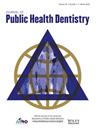Investigating the Association Between Parental Paid Sick Leave Benefit and Children's Dental Care Utilization
Abstract
Objective
The purpose of this research is to examine the association between paid sick leave (PSL) benefit for employed parents and their child's dental care utilization, including preventive, diagnostic, and treatment services.
Methods
Using pooled data from the 2017–2019 Medical Expenditure Panel Survey, we created a dyadic observational unit linking children aged 0–17 years with their parents (n = 7652) specifically focusing on the younger children of employed parents. Descriptive statistics and a multivariate logistic regression model were employed to examine the association between parental PSL benefit and child dental care utilization, accounting for various child and parent level covariates. All analyses were adjusted for complex survey design, and survey weights were used to get national estimates.
Results
Seventy-six percent of children had at least one employed parent with PSL benefit in 2017–19. Among them, 44% of children had preventive visits, 45% had diagnostic visits, and 17% had treatment visits. The adjusted logistic regression analysis showed that children with parental PSL benefit had higher odds of having preventive dental visits (odds ratio [OR] 1.18, 95% confidence interval [CI] 1.01–1.38) and diagnostic visits (OR 1.20, 95% CI 1.03, 1.41) compared with children without parental PSL benefit.
Conclusion
Parental PSL benefit was associated with augmenting the use of preventive and diagnostic dental care visits among children. Collaboration among policymakers, employers, and dental providers is essential to address disparities in children's dental services utilization and support PSL policies for working parents.


 求助内容:
求助内容: 应助结果提醒方式:
应助结果提醒方式:


